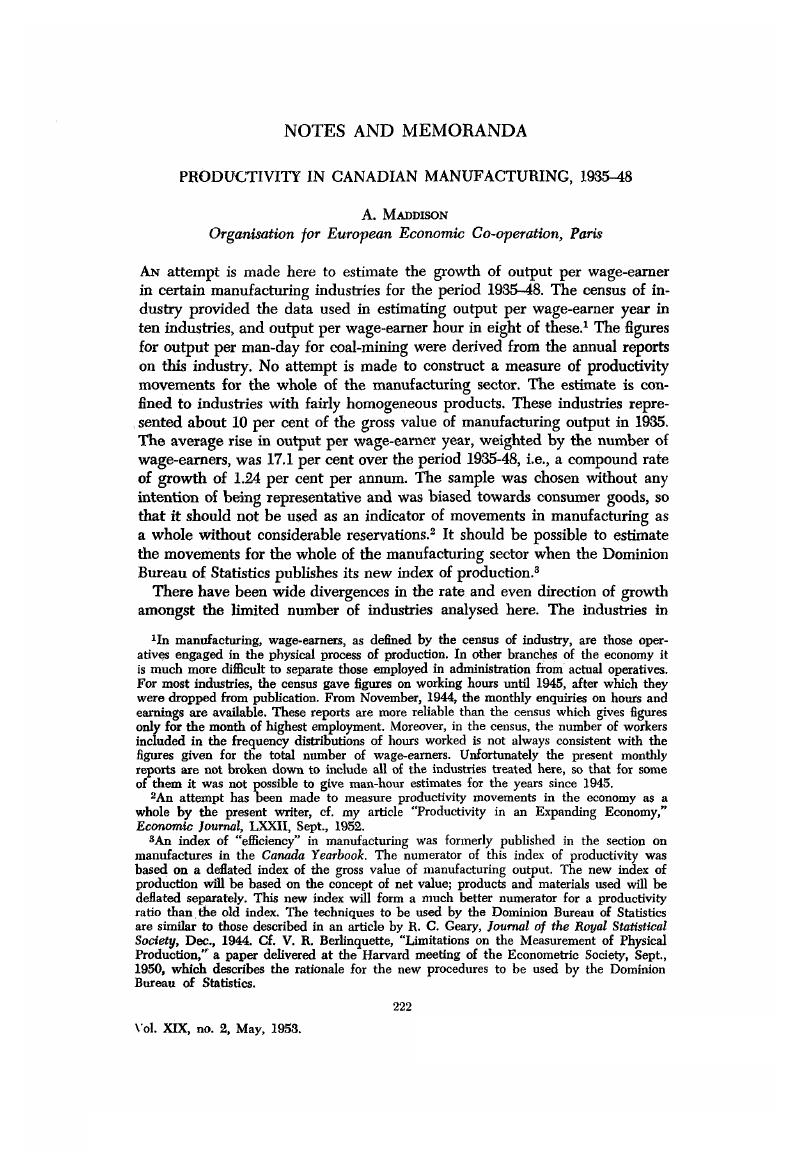No CrossRef data available.
Published online by Cambridge University Press: 07 November 2014

1 In manufacturing, wage-earners, as defined by the census of industry, are those operatives engaged in the physical process of production. In other branches of the economy it is much more difficult to separate those employed in administration from actual operatives. For most industries, the census gave figures on working hours until 1945, after which they were dropped from publication. From November, 1944, the monthly enquiries on hours and earnings are available. These reports are more reliable than the census which gives figures only for the month of highest employment. Moreover, in the census, the number of workers included in the frequency distributions of hours worked is not always consistent with the figures given for the total number of wage-earners. Unfortunately the present monthly reports are not broken down to include all of the industries treated here, so that for some of them it was not possible to give man-hour estimates for the years since 1945.
2 An attempt has been made to measure productivity movements in the economy as a whole by the present writer, cf. my article “Productivity in an Expanding Economy,” Economic Journal, LXXII, 09, 1952.Google Scholar
3 An index of “efficiency” in manufacturing was formerly published in the section on manufactures in the Canada Yearbook. The numerator of this index of productivity was based on a deflated index of the gross value of manufacturing output. The new index of production will be based on the concept of net value; products and materials used will be deflated separately. This new index will form a much better numerator for a productivity ratio than the old index. The techniques to be used by the Dominion Bureau of Statistics are similar to those described in an article by Geary, R. C., Journal of the Royal Statistical Society, 12, 1944.Google Scholar Cf. Berlinquette, V. R., “Limitations on the Measurement of Physical Production,” a paper delivered at the Harvard meeting of the Econometric Society, 09, 1950 Google Scholar, which describes the rationale for the new procedures to be used by the Dominion Bureau of Statistics.
4 Coke was an exception. In 1935 it formed 41.0 per cent of the value of output of the industry, which included gas, and by-products. The physical product-mix of the industry has been fairly stable, so that the output of coke can be taken as a good indicator of the movement of output in the whole of the industry.
5 F. C. Mills was the first to discuss the problem of the adequacy of different “coverage ratios,” i.e., pq/∑pq. The term itself is Fabricant's. The latter prescribed the second index when it is thought “that prices probably move together within closer limits than do quantities.” He discusses the margins of error involved in using different degrees of coverage and has devised a formula which shows that if a minimum ratio of 40.0 per cent is used (as here) there will be a margin of error of 5 per cent given an 8 per cent price deviation between the covered and non-covered commodities. There was a contemporaneous discussion of the problem by E. Devons in England. Cf. Mills, F. C., Economic Tendencies (New York, 1932), 90, 92–3Google Scholar, Fabricant, S., The Output of Manufacturing Industries 1899–1937 (New York, 1940).Google Scholar App. A., 362–7. Devons, E., Manchester School, vol. 10, 1939, 55.CrossRefGoogle Scholar